Thrombosis is the inappropriate activation of blood clotting in intact vasculature or after minor injury.
The three main factors, which contribute to thrombus formation, namely Endothelial injury, Alterations in blood flow and Hypercoaguability are together called Virchow’s triad.

Endothelial injury exposes the subendothelial matrix (1), increases platelet adhesion and activation (2), increases procoagulant production [Plasminogen Activator Inhibitor] (3) and reduces anticoagulant activity [thrombomodulin] (4).

Alterations in laminar blood flow due to stasis or turbulence promotes thrombosis.
Hypercoaguable states that may be inherited (Factor V Leiden) or acquired (OC pills, antiphospholipid antibody syndrome) contribute to thrombosis.
There are differences in the mechanism of formation and morphology of arterial (and cardiac) and venous thrombi. These differences are summarized in Table 1.
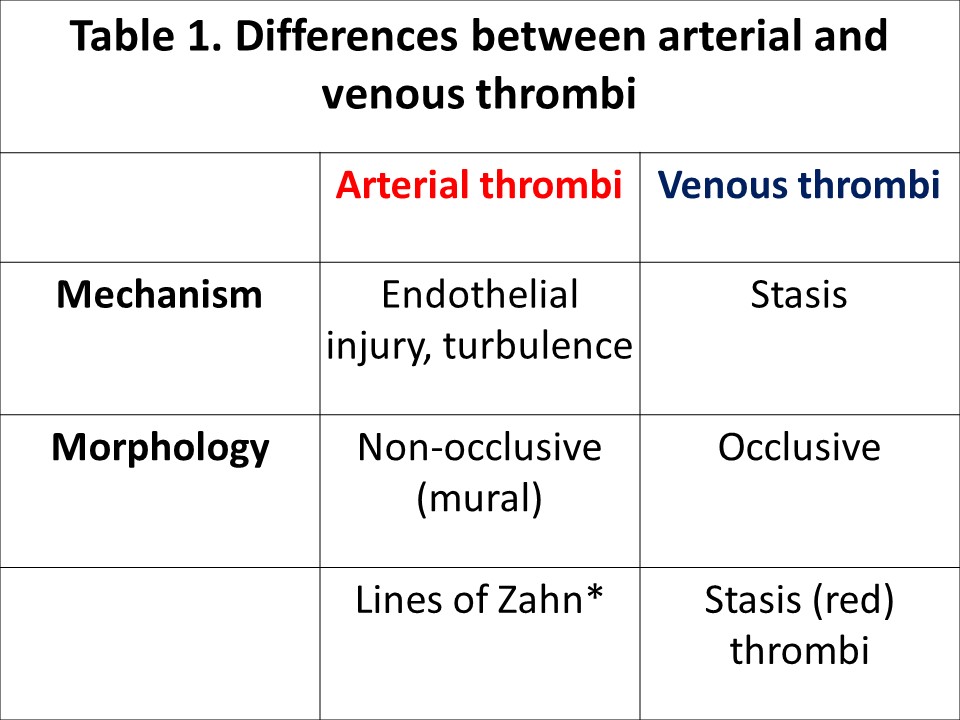
Lines of Zahn are produced by alternating pale layers of platelets and fibrin with darker layers of erythrocytes.
Once formed, a thrombus can have one of the following fates – vascular occlusion, propagation in the direction of blood flow, embolization, dissolution or organization and canalization.
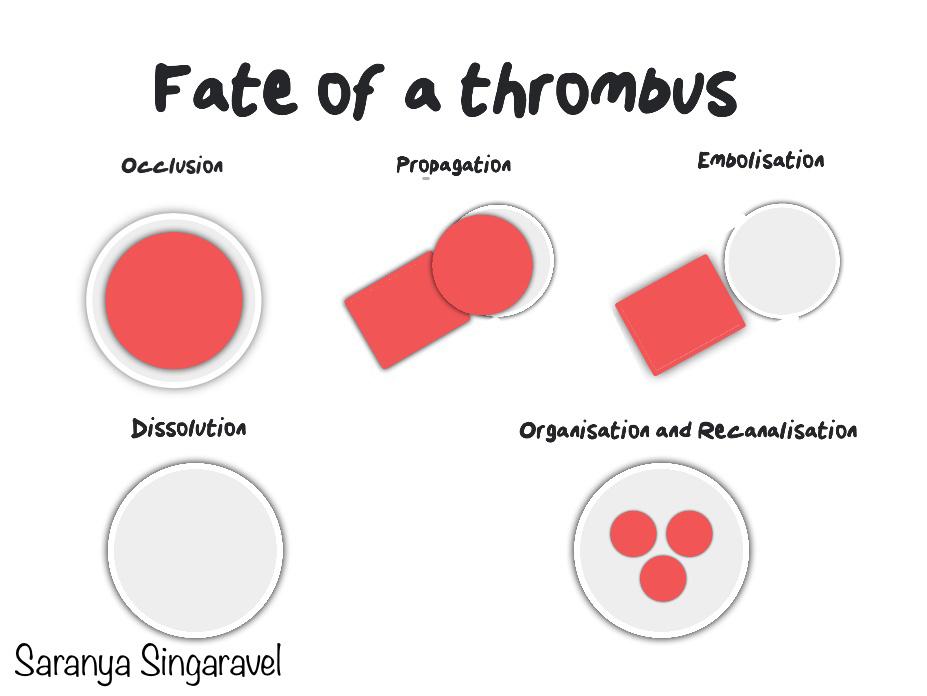
Deep vein thrombosis – Thrombi can form in the deep veins of the lower limb due to immobilization or trauma. Upto 50% of these cases are asymptomatic due to collateral circulation and come to attention due to pulmonary embolism.
Trousseau syndrome or migratory thrombophlebitis – Occurs in cancer patients due to the release of procoagulant substances in the circulation.

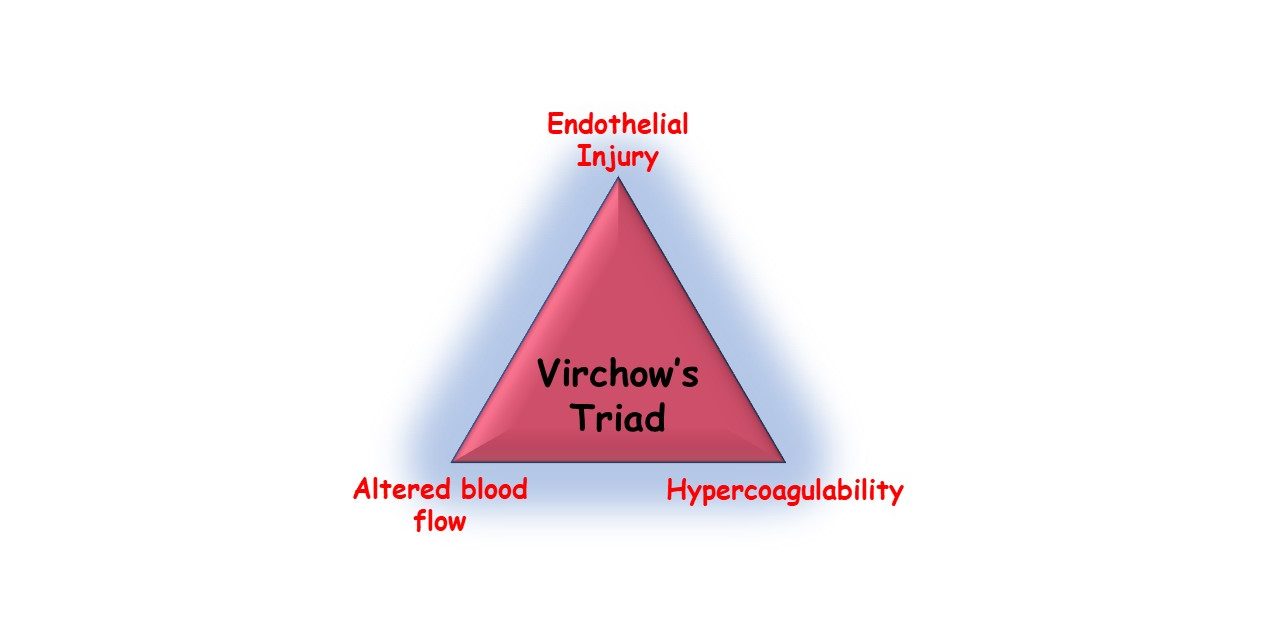
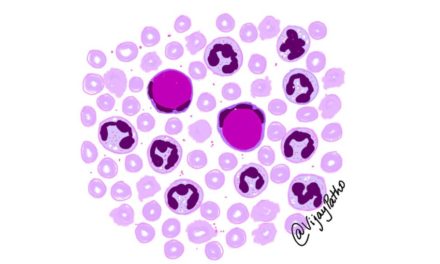
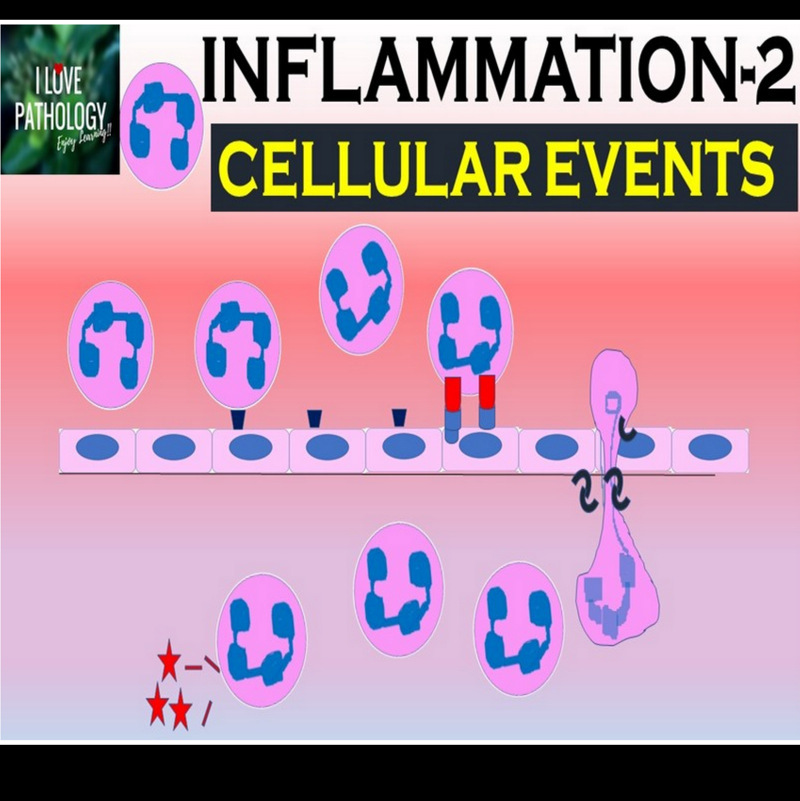

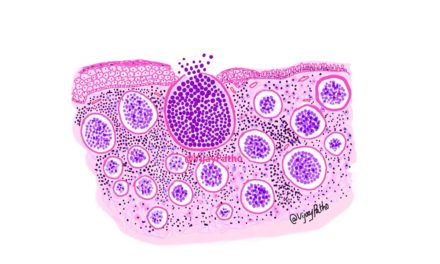





Recent Comments